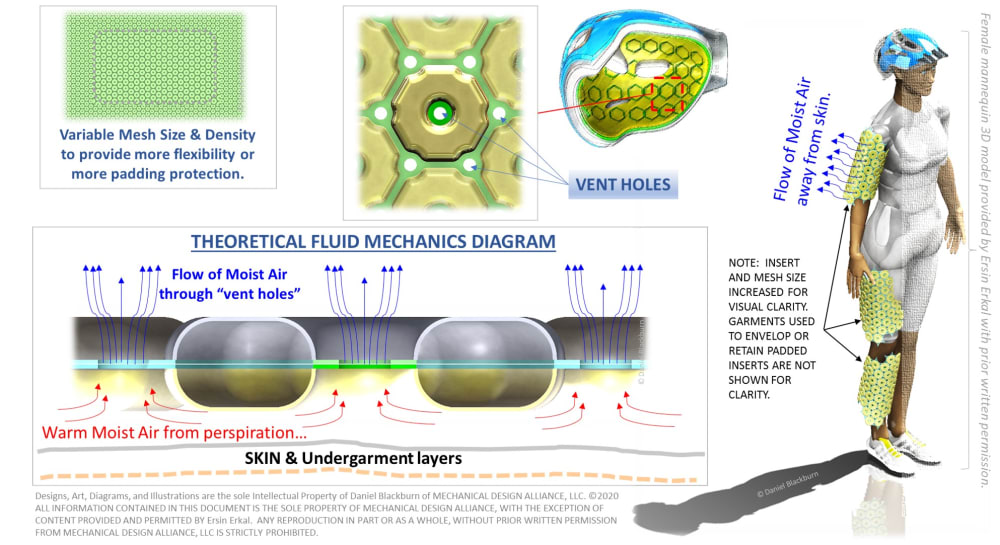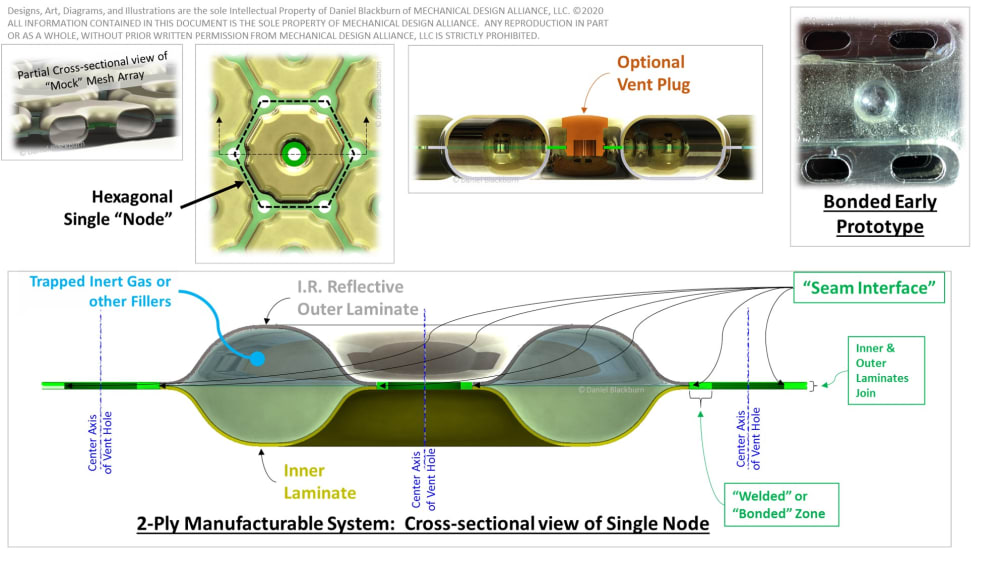Every year millions of people suffer various injuries that could be mitigated or even prevented. Some individuals avoid certain jobs, activities, or sports due to the associated risks of injuries. Many daily activities pose risks such as: abrasions, lacerations, blunt trauma, heat or cold exposure, or other ergonomic injuries. Some examples of regular activities that present common risks: kneeling to perform construction tasks that could damage the knee joint; gardening where sharp objects could puncture the skin; hiking where rocks or thickets present abrasion hazards; working outdoors in cold winter conditions risking hypothermia; playing football in hot conditions with padding that does not breath effectively; riding a bike with exposed limbs and torso risking blunt force trauma.
This Barrier System aims to improve the quality of life by providing an improved level of protection for everyday activities, by integrating it into everyday apparel and gear, without costing a fortune or requiring heavy, bulky, or uncomfortable attire or equipment.
Designated Design Criteria:
- Significant blunt trauma protection
- Significant abrasion protection
- Moderate puncture resistance
- Moderate laceration resistance
- Option to reduce cold exposure
- Breathable
- Lightweight
- Flexible
- Packable
- Manufacturable
- Affordable
- Readily Replaceable
- Attainable
- Recyclable
How it works:
This Barrier System provides protection using a tough, yet pliable, 2-Ply thin-film plastic that consists of hexagonal-shaped Pods that are filled with inert gas, foam, fiber, mesh, or various combinations. Each Pod acts as a shock absorber. The Weld Seam area along the perimeter of the Pod has Holes that allow ventilation. Collectively, the Holes, Weld Seams, and Pod constitute a Node. A protective pad segment consists of a vast array of nested Nodes. Pad Segments are then installed with hook-&-loops, adhesives, or in pouches. The barrier may even be used alone. Recyclable LDPE was initially selected for its performance-to-cost benefits, but numerous alternatives exist including fire retardant forms.
Innovations:
This Barrier System is unique in that it provides ultra-lightweight cushioning, puncture and tear resistance, and conforms to the body. Each Node acts as a sacrificial unit, and if compromised, the surrounding Nodes remain intact and undamaged. The heavily vented design achieves breathability not obtained by traditional protective gear. The use of thin-film plastics reduces bulk, weight, makes it packable, and drives down costs. Many variations or embodiments have been selected including: Node shape, Sealing method, pattern density, general dimensions, materials, fabric reinforcement, Filler combinations, vent plugs or membranes, pre-cut patterns, installation methods, and number of layers.
Manufacturability:
The thin-film plastic production methods available are vast, ensuring it will be affordable and attainable to produce. Some non-proprietary production methods include: Air bubble machines, hydroforming, compressed gas, ultrasonic welding, laser welding and conveyor laminate bonding processes.
Applications:
The Barrier System may be applied to backpacks, winter jackets, work pants, bench covers at sporting events, sports uniforms and equipment, flight suits, battle dress uniforms, police and firefighter uniforms, horseback leggings, ballistic trauma plates, various paddings, and protective padding for elderly who are prone to fall.
Like this entry?
-
About the Entrant
- Name:Daniel Blackburn
- Type of entry:individual
- Software used for this entry:SolidWorks
- Patent status:none








